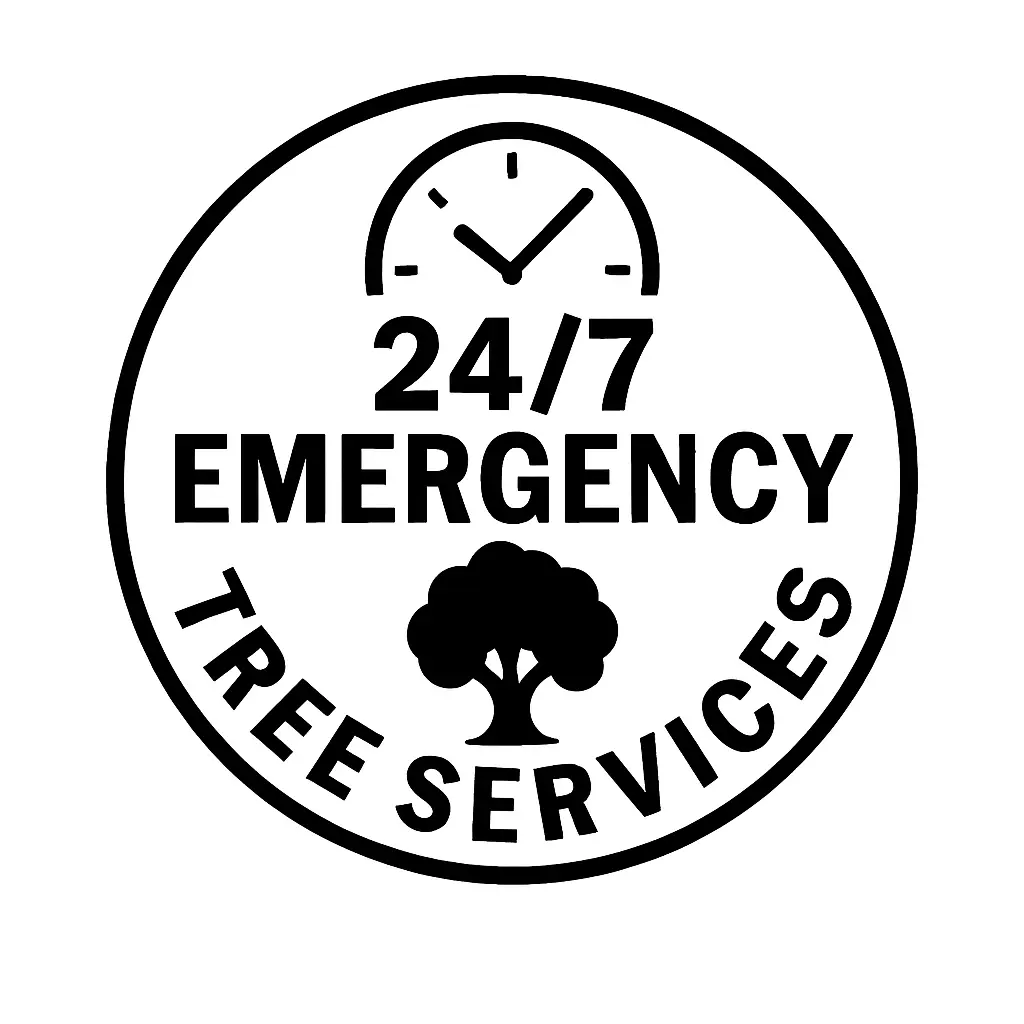The unexpected sight of trees shedding leaves in the vibrant summer canvas can perplex even the most seasoned nature enthusiasts. The norm dictates that trees should be adorned with lush foliage during this season, making such an anomaly a subject of curiosity and concern. Delving into this uncommon phenomenon unveils a narrative beyond mere aesthetics, touching the essence of a tree’s vitality.
Understanding the Importance of Leaves
Leaves, those intricate and verdant structures, are not just ornamental features of a tree; they are the lifeblood of its existence. With its prolonged hours of sunlight, summer is the zenith of a tree’s photosynthetic activity. Through the miraculous process of photosynthesis, leaves harness the sun’s energy to produce vital nutrients, ensuring the tree’s growth, sustenance, and overall well-being.
In the symphony of nature, leaves serve as the green architects, absorbing carbon dioxide and exhaling life-enabling oxygen. They provide shade and shelter and contribute to the ecological balance that sustains our planet. So, when the script deviates and leaves abandon their posts prematurely, it signals not just a cosmetic change but a potential disruption in the fundamental life processes of a tree.
This article endeavors to unwrap the layers of this enigma, exploring the reasons behind trees shedding leaves during summer and the paramount role leaves play in the intricate dance of nature. From unraveling the common culprits to offering practical solutions, our journey begins with a quest to comprehend this unusual twist in the seasonal tale of trees.
Common Causes of Trees Losing Leaves in Summer
In the intricate web of the natural world, the unexpected shedding of leaves by trees during the summer season often signals an underlying struggle. This section delves into the common causes, acting as detectives and custodians to decipher the mysteries unfolding within the foliage.
1. Environmental Stressors:
|
Stressor |
Impact on Trees |
Mitigation Strategies |
|
Drought |
Depletes soil moisture, hindering photosynthesis |
Adequate watering, Mulching, and soil amendments |
|
Extreme Temperatures |
Disrupts metabolic processes, causing leaf stress |
Shade provision, proper pruning, and Mulching |
|
Pollution |
It damages leaf surfaces and hampers gas exchange |
Air purification, proper tree selection |
With its relentless grasp on soil moisture, drought is a formidable adversary, impeding a tree’s ability to perform vital photosynthesis. Adequate watering, thoughtful Mulching, and soil amendments emerge as the allies in this battle, offering a lifeline to thirsty roots.
On the other hand, extreme temperatures disrupt the delicate dance of metabolic processes within the leaves, inducing stress. To counter this, providing strategic shade, adopting proper pruning practices, and employing Mulching are crucial strategies in shielding trees from the harsh summer sun.
Pollution, with its insidious tendrils, infiltrates the very surfaces of leaves, hindering their ability to exchange gases effectively. Advocating for air purification measures and choosing tree species resilient to environmental pollutants is imperative to combat this silent assailant.
2. Pest Infestations:
|
Common Pests |
Impact on Leaf Health |
Control and Prevention |
|
Aphids |
Suck sap, causing leaf curling and discoloration |
Insecticidal soaps, natural predators |
|
Spider Mites |
Feed on leaf fluids, leading to stippling |
Regular pruning, insecticidal oils |
|
Caterpillars |
Consume leaves, resulting in defoliation |
Manual removal, biological controls |
Pest infestations present another layer of the mystery behind leaf loss. Aphids, spider mites, and caterpillars, among other culprits, can wreak havoc on a tree’s foliage. Employing targeted solutions such as insecticidal soaps, natural predators, regular pruning, and manual removal becomes instrumental in preserving leaf health.
3. Diseases:
|
Common Diseases |
Symptoms of Leaf Affliction |
Prevention and Treatment |
|
Anthracnose |
Irregular leaf spots, premature leaf drop |
Fungicide application, proper sanitation |
|
Powdery Mildew |
White powdery patches on leaves |
Adequate spacing, fungicidal treatments |
|
Root Rot |
Wilting, yellowing leaves |
Improved drainage, soil aerification |
Diseases and stealthy intruders into the arboreal realm contribute significantly to leaf loss. Anthracnose, powdery mildew, and root rot are among the common adversaries. Vigilant application of fungicides, proper sanitation, adequate spacing, and improved soil drainage are key strategies in thwarting these maladies and preserving the vitality of a tree’s foliage.
By unraveling the intricacies of environmental stressors, pest infestations, and diseases, we equip ourselves with the knowledge to address the root causes of trees losing leaves during summer. The journey towards holistic tree care continues as we explore preventive measures and proactive interventions in the subsequent sections.
Observing and Assessing Tree Health
As guardians of the green realms, our role extends beyond acknowledging the leafy expanse. Understanding the signs of distress trees exhibit and recognizing the significance of proper watering and soil conditions are vital to ensuring their well-being. Let us embark on a journey to decode nature’s language and embrace the responsibilities of fostering a thriving arboreal environment.
1. Signs of Distress:
|
Visual Cues |
Possible Issues |
Recommended Actions |
|
Leaf Discoloration |
Nutrient deficiency, pest infestation |
Soil testing, fertilization, pest control |
|
Premature Leaf Drop |
Environmental stress, disease |
Identify stressors, disease management |
|
Leaf Curling |
Water stress, aphid infestation |
Adjust watering schedule, apply insecticides |
|
Unusual Growth |
Poor soil conditions, root damage |
Soil improvement, root inspection |
Leaves, the messengers of a tree’s overall health, often convey distress signals through subtle changes in color, premature drop, curling, or unusual growth patterns. The key lies in deciphering these cues and addressing the underlying issues promptly.
2. The Role of Proper Watering and Soil Conditions:
|
Factors |
Impact on Tree Health |
Best Practices |
|
Watering Frequency |
Underwatering leads to stress, overwatering to rot |
Adjust based on soil moisture and weather |
|
Soil Composition |
Impacts nutrient availability and root development |
Regularly amend with organic matter |
|
Soil Moisture Levels |
Influences root health and water absorption |
Mulching, regular monitoring, deep watering |
|
Drainage and Aeration |
Prevents waterlogging and promotes oxygen uptake |
Incorporate organic matter, aerate the soil |
Proper watering and soil conditions serve as the cornerstone of tree health. Watering frequency, soil composition, moisture levels, and adequate drainage play pivotal roles in sustaining a tree’s vitality. By aligning our practices with the tree’s needs, we prevent distress and actively contribute to its flourishing existence.
Observing and assessing tree health is an ongoing dialogue with nature. By honing our ability to interpret visual cues of distress and mastering the art of providing optimal watering and soil conditions, we become stewards of an environment where trees survive and thrive. The journey of holistic tree care continues as we explore preventive measures and delve into the intricate nuances of understanding seasonal anomalies.
Preventive Measures
As stewards of nature, our commitment to the well-being of trees extends beyond mere observation; it encompasses proactive steps to prevent the untimely shedding of leaves during the summer months. In this section, we unravel practical tips to create a protective shield for our arboreal companions and stress the critical importance of early intervention in forestalling potential problems.
1. Tips on Preventing Trees from Losing Leaves in Summer:
|
Preventive Measure |
Rationale |
Implementation Strategies |
|
Adequate Watering |
Mitigates drought stress and ensures optimal hydration |
Water deeply, especially during dry periods |
|
Mulching |
Preserves soil moisture, regulates soil temperature |
Apply a layer around the base, avoiding the trunk |
|
Proper Pruning |
Enhances air circulation, removes diseased branches |
Follow recommended pruning practices |
|
Fertilization |
Supplies essential nutrients support overall health |
Choose appropriate fertilizers, follow guidelines |
|
Pest Control |
Prevents infestations, safeguards leaf health |
Regular inspection, use of natural predators |
Ensuring adequate watering is a foundational measure, alleviating drought stress and maintaining optimal hydration levels. As a natural insulator, Mulching helps preserve soil moisture and regulate temperature, creating a conducive environment for healthy leaf retention.
When done judiciously, proper pruning enhances air circulation and eliminates diseased branches, curbing the spread of potential threats. Fertilization becomes a tailored nutrient infusion, promoting tree health and resilience against stressors. Vigilant pest control through regular inspection and incorporating natural predators forms a crucial line of defense.
2. Importance of Early Intervention:
- Early identification of stressors and potential issues allows for timely intervention.
- Proactive measures reduce the risk of irreversible damage, fostering a resilient and thriving tree.
Timely action, akin to a shield raised in defense, holds paramount importance. Early intervention hinges on keen observation, swift identification of stressors, and implementing preventive measures before issues escalate. By embracing a proactive stance, we preserve the aesthetic appeal of trees and contribute significantly to their sustained vitality.
As we fortify our trees against summer challenges, we recognize that our efforts go beyond mere guardianship—they constitute a dynamic partnership with nature. The journey through preventive measures unfolds as we delve into the intricacies of understanding seasonal anomalies and explore general guidelines for comprehensive tree care.
Understanding Seasonal Anomalies
As we continue our journey into the nuanced world of tree care, exploring seasonal anomalies becomes a pivotal chapter. This section ventures into the natural rhythms of specific tree species, unraveling whether shedding leaves during summer is an inherent characteristic. Additionally, we delve into the art of differentiating between normal and abnormal leaf-shedding behaviors through a comprehensive table.
1. Research on Certain Tree Species:
- Investigate whether certain tree species have evolved to shed leaves during the summer.
- Consult reputable sources, botanical guides, or local arborists for species-specific insights.
Understanding the natural behavior of trees is crucial. Some species tend to shed leaves during summer to adapt to specific climates or environmental conditions. While surprising, this inherent behavior may be a survival strategy. Researching specific tree species provides valuable context and aids in distinguishing between normal and abnormal leaf-shedding patterns.
2. Differentiating Between Normal and Abnormal Leaf Shedding Behaviors:
|
Criteria |
Normal Leaf Shedding |
Abnormal Leaf Shedding |
|
Seasonal Consistency |
Consistent with the species’ natural cycle |
Out of sync with the typical seasonal behavior |
|
Uniformity in Leaf Drop Pattern |
Gradual shedding across the entire tree |
Abrupt or widespread leaf drop unrelated to seasons |
|
Health of Shed Leaves |
Leaves show signs of natural aging and senescence |
Premature leaf drop, often accompanied by discoloration or abnormalities |
|
Environmental Factors |
Corresponds with expected environmental changes |
Unexplained leaf loss not attributed to known stressors |
Understanding the nuances of leaf-shedding behaviors is crucial for differentiating between what is considered normal for a particular species and what may indicate an underlying issue. Using this table as a guide, observers can assess whether the tree’s behavior aligns with its natural cycle or if deviations may require further investigation.
As we navigate the intricacies of seasonal anomalies, it becomes clear that embracing a contextual understanding of specific tree species is essential. This knowledge empowers us to discern between natural adaptations and potential stress-induced leaf loss. The journey continues as we explore general guidelines for tree care, focusing on holistic practices to maintain the health and vibrancy of our arboreal companions.
Tree Care and Maintenance Tips
In tree care, the pursuit of knowledge extends to comprehensive guidelines beyond mere observation and intervention. This section is dedicated to unraveling the art of maintaining healthy trees through general tips and emphasizing proper pruning, fertilization, and pest control in sustaining arboreal vitality.
1. General Guidelines for Maintaining Healthy Trees:
|
Care Aspect |
Recommendations |
|
Soil Health |
Regularly amend the soil with organic matter. |
|
Watering |
Provide deep and consistent watering, especially during dry spells. |
|
Mulching |
Apply a layer around the base, avoiding direct contact with the trunk. |
|
Protection from Mechanical Damage |
Safeguard trees from lawnmowers, weed whackers, and other equipment. |
|
Monitoring |
Regularly inspect for signs of stress, disease, or pest infestations. |
Cultivating a healthy foundation begins with soil health. Regularly amending the soil with organic matter ensures a rich and nutrient-dense environment for tree roots. Consistent deep watering remains crucial for sustaining hydration, particularly during dry spells. Mulching controls soil temperature and retains moisture by acting as a natural insulator. Protection from mechanical damage, through vigilant care around the tree base, shields against accidental harm. Regular monitoring, like routine health check-ups, helps identify signs of stress, diseases, or pest infestations.
2. The Role of Proper Pruning, Fertilization, and Pest Control:
|
Tree Care Aspect |
Key Practices |
|
Proper Pruning |
Follow recommended pruning practices to enhance air circulation and remove diseased branches. |
|
Fertilization |
Choose appropriate fertilizers and adhere to recommended application guidelines. |
|
Pest Control |
Implement regular inspections and introduce natural predators for pest management. |
Proper pruning is an art that goes beyond trimming; it involves strategic removal to enhance air circulation, promote healthy growth, and eliminate diseased or damaged branches. Fertilization, tailored to the tree’s specific needs, ensures a balanced supply of nutrients essential for sustained vitality. Vigilant pest control, through regular inspections and the introduction of natural predators, protects against potential threats.
As stewards of the arboreal realm, these general guidelines and specific practices contribute to the holistic care of trees. By nurturing soil health, providing appropriate watering, practicing vigilant monitoring, and employing targeted interventions like pruning, fertilization, and pest control, we not only preserve the aesthetic allure of trees but actively contribute to the longevity and resilience of our green companions. The journey of tree care concludes as we consolidate our knowledge and insights, recognizing that our commitment to the well-being of trees is an ongoing dialogue with the natural world.
Conclusion
In conclusion, understanding why a tree might lose leaves during summer is crucial for its well-being. By recognizing common causes, implementing preventive measures, and adopting proper tree care practices, you can ensure your trees thrive even in the hottest months. Proactive tree care is about preserving aesthetics and sustaining the ecological balance of your surroundings. Embrace the knowledge this guide shares to foster healthy and vibrant trees throughout the summer and beyond.





